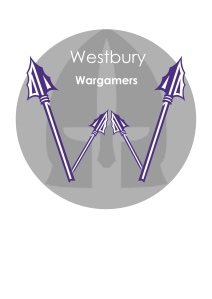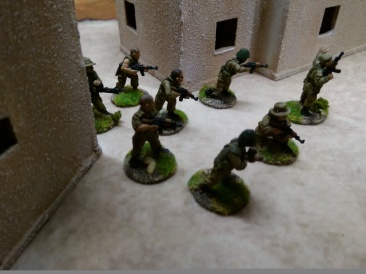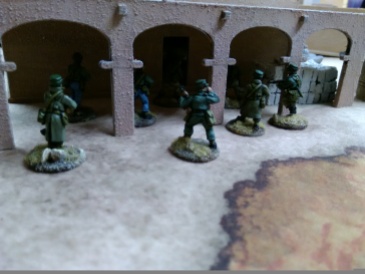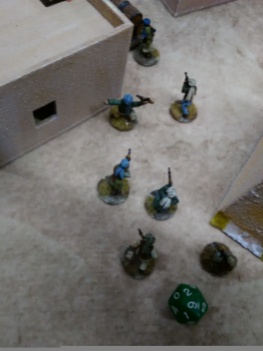
This post is by no means a review, rather some observations on both sets resulting from playing several modern games in a row recently, but first some context.

Modern gaming (ie late C20th & C21st so far) is a relatively new phenomena for us at Westbury, our idea of modern gaming was Vietnam! About 3 years ago I came across the Spectre Operations rules at Games Expo and because they were nice people and the figures were lovely and the starter pack offer was attractive I bought them and slowly convinced the group we should give it a go. It wasn’t plain sailing, V1 of the rules was a bit confusing and the whole asymmetric thing was difficult to get our heads around – shout out here to Michael Charge at Charge Blog for his patience with my rule queries and his enthusiasm for modern gaming. By the time V2 came out we were much more comfortable with the whole modern scene and had built up forces to game with – Sicario, Libya & Syria plus converting our Soviet/Afghan games to using Spectre. The Bolt Action journey has been much quicker and simpler, I went down to Wales for a game with fellow twitterite Gareth Lane and we used Bolt Action Modern for a Russian/Chechen game (see earlier post) and it was only afterwards that I realised that the rules are from Jays Wargaming Madness who created several pages of quick reference sheets tuned to modern wargaming, there is no rule book and I guess the fine detail is in the Bolt Action WWII rules which kind of means you need them to really know what you’re doing.

After the Chechen game I came back full of enthusiasm and so Dave and I gave the Bolt Action a go with the Soviets & Afghans with a view to comparing with our Spectre experience. The plan was to play one game each using the same scenario – Soviet attack on Mujaheddin held town but after the first game lock-down kicked in! However my son, who isn’t a figure gamer, volunteered to help me out so two games with a complete novice got played and his views greatly inform this piece.

Based on the Chechen experience, where Bolt Action seemed to cope quiet easily with large forces, I went big for the Soviets and Mujaheddin; for the Soviets, four sections of infantry – two soviet rifle squads and two afghan army squads supported by a BMP1, a BTR60 and a BRDM plus a HIND on stand by; for the Mujaheddin, three sections of infantry, a mortar team, a heavy machine gun team, a recoiless rifle team, a sniper team and a suicide bomber. The Soviets could enter by any or all of the roads and the HIND could only be called by the commander (in the BRDM) and would be on station for D6 turns; the Mujaheddin could be hidden anywhere. The Bolt Action game played first.

In Bolt Action you draw special coloured dice from a bag (one colour for each side) one at a time and the actions permissible are on the six faces – Advance, Fire, Run etc and as the dice comes out the player whose colour it is places it on any unit with it’s action face up and completes that action. All very simple but in a bigger game like this quite long winded, if we were two experienced players it might well have moved along quicker but I guess you can say that of most rule sets. The plus to this is the ‘fun’ of not quite knowing what will come out of the bag and if it’s your colour who or what do you activate, making it into a kind of blind mans poker; the negative is that the very randomness can seem a tad unrealistic (yes I know it’s toy soldiers) and the efficiency of a modern army or for that matter the skill of an insurgent force on it’s home turf can be lost. What it does mean is that by the time you’ve cycled through turn one something will have happened and that was true for us.
Nuts and bolts wise movement is simple, infantry advance 6″ or run 12″ (no fire), vehicles are tracked, armoured wheeled or light wheeled with their own advance and run speeds (doubled on roads, which we missed!) which effect the amount of 90 degree turns they can make. Terrain is in five categories and generally slows movement, none of this is particularly remarkable except buildings, infantry move through at normal speed almost as if they weren’t there; if we have learnt anything from recent conflicts it’s that buildings are a pain in the arse and slow movement, so not so sure about this.
Shooting is lots of dice (D6). Basically the squad or the vehicle nominates it’s target, measures up and rolls as many dice as they are allowed (and it can be a lot!) and see if they get hits; there is no real limitations on who in the squad can fire, as long as they are in range they can blaze away. The weapons to have in this are lmg’s (4 dice) and mmg’s (5 dice), I couldn’t reconcile why hmg’s are only 3 dice, I presume it’s do with them being mainly vehicle mounted. At the most basic level you always need a 3+ to get a hit, there are the usual factors that effect the roll and the number of hits you get equates to pin markers on the unit which isn’t actually pinned as we know it but the more of these markers it carries around with it the less effective it becomes. You roll again then against the hits for kills (there are no wounds) with lower quality troops being easier to kill, this being based on an idea of better quality troops being more effective about using the ground I guess? I’ll admit I’m not sold on this mechanism it’s clunky and a bit contrived and in our shoot out in the villa quite a blood bath. Vehicles follow the same pattern except that weapons have a penetration value which you compare against the vehicle armour class and then depending how much better the penetration, roll for how much damage the vehicle takes; this is one of the examples of where you need the rule book, I think I got it right but the ref sheets alone aren’t good enough.
Troop quality/morale caters for four troop types, Irregular, Inexperienced, Regular and Veteran, each with their own ascending numeric value which you roll against (2 x D6) to pass morale. As best as I could remember (the ref sheet doesn’t say) you test to see if you carry out the order you gave on the dice out of the bag and test again if you took casualties; NCO’s & leaders add bonuses (so don’t get them killed!) and pin markers are a minus effect but one of the orders you can choose is Rally where you can get rid of pin markers which can be a crucial choice at certain points in the game. What quite happens if you fail isn’t on the ref sheets but based on memory from the Chechen game we played the unit went ‘down’ and needed to be rallied again next time. The four classes is simple enough I guess but it is broad brush, are all insurgents ‘irregular’ or are some veteran? (which clearly they are), is everybody in uniform ‘regular’? Is the classification for the whole unit or can elements within be a different class?
Extras? Yes almost everything is covered you might want, snipers, drones, chemical weapons, helicopters, suicide bombers, plus two pages of special rules, so if you want it it’s there if you look and know how to interpret it within the Bolt Action world.

Verdict. Yes it gives a fun, rough and tumble game where a ‘willing suspension of disbelief’ is key to the enjoyment; there is lots of dice rolling, pretty unrestricted movement and morale doesn’t really have too much of an effect. Two people can bang some troops on the table and play a game with the published quick ref sheets and just wing it where it’s not clear, but to get the best out of it you really do need the main rules and that means investing in the whole Bolt Action scene via Warlord Games which might not be where you want to be – I bought two sets of the dice so we could actually play and at thirty quid for 24 dice I thought someone was taking the piss, luckily I didn’t buy a £24 dice bag! My other thought on this was how to do multi play? The dice out of the bag approach does seem to preclude anything other than two players; if you’ve got say two players on each side do they take it in turns when their colour comes out whether they want to or not? I have thought on this with a view to doing a large game with a bunch of guys who haven’t played the rules but can’t see how this would work. Ultimately this is Blue Team v Red Team with very little ‘theatre flavour’ other than what dedicated gamers ca put into it, I don’t say that as a bad thing, it just is.
The Spectre game was played two days later, same scenario, same forces more or less, my son and I just swamped sides.
In Spectre the players dice for Initiative at the beginning of each turn based on a D6 roll and the best command level of their squad – all troops have their own command, shooting, defence, agility and melee levels but generally it is the NCO within the squad who is different. This is easy for a squad on squad game but using multiple units as we were meant a lot of rolling although in fact it actually worked quite well we just placed D10’s with the value against each unit; when you have multiple players this problem goes away, each player roles for his unit. The squad with the highest Initiative goes first then in each of the next three phases that make up the turn, Command – basically instructions to take special actions – Overwatch (shoot in the opponents turn) being the most common and useful, Movement & Actions, Combat. Then repeat for next turn. The plus to this is that better led troops will generally do stuff first which seems fairly historic although it can lead to a certain amount of predictability and new players will find using elite troops a bit of a challenge at first.

The Command phase allows a player to carry out a variety of actions to improve their tactical position by dicing (D6) against their command skill – the higher the command skill the easier it is to pass. The actions can vary from the easy like going on Overwatch to the more tricky like calling in Fire Support. Kind of obviously keeping your NCO alive is key and elite troops pass these tests in most cases giving their class a tactical advantage.
Movement for standard infantry is 6″ just like Bolt Action but variances on this like running, moving stealthily, crossing difficult terrain and climbing, are based on the Agility and testing against it. Vehicles all have their own set of stats including movement and the rules have 20+ to choose from so virtually everything in the modern scene is covered including civilian types.
Shooting is by figure not squad so can be a bit more long winded but as it is based on LOS not everyone is going to be able to shoot anyway. Basically the shooter takes his shooting skill , adds a D6 roll to it and modify’s with a couple of factors, the target takes his defence skill and adds a D6 roll to that and the results compared; if the shooter beats the defender he gets a hit and then rolls against the lethality of his weapon to either kill or wound. Weapons can fire multiple shots (bursts really) which degrade the hit potential but every shot fired places a suppression marker on the target unit a bit like the Bolt Action pinned and whenever the number of suppression reaches the command level of the unit, and that is pretty quickly on lower quality troops they immediately test morale and can end up suppressed and that keeps on going through the shooter’s phase so their morale level can degrade severely in one round of firing. The overall effect is not people dying but losing the ability to progress the fight due to weight of fire. The rules again contain an impressive list of weapons and their stats and what they can and cannot do which at first can be a bit daunting so new players should start small – not like my son in our game!
There is no morale test in Spectre as such, troops are Suppressed or worse (Flee) as a result of firepower but one of the Command actions is Rally so players can attempt to bring down the level of suppression before it gets out of control. Troop quality is again four levels each with it’s own set of stats for NCO’s and soldiers (in the broadest sense) plus one for civilians but each level has it’s own restrictions in terms of how versatile they can be armed and what perks they get for certain conditions in the game. So although still four levels the flexibility within does give the squads an air of ‘realism’ and a bit of scenario specific ‘colour’.
Extras? Yes, drones, IED’s, booby traps, comms, surveillance, off table assets and a whole load of separate data around each – there can be a tendency to overload with some of this and the ‘child in a sweet shop’ temptation can lead to you coming unstuck – pun intended. On the down side however the strive for realism can suck the fun element out of the use of off table assets because they are just that, off table; so the mortar team in the Bolt Action game couldn’t feature in the Spectre game because it wouldn’t be so up close and personal and the HIND (featured here being shot down by my son’s RPG follower) would be ‘in the air’ and so not visible – I came up with a local rule so we could feature it again although it had been pretty ineffective in the Bolt Action game. This is a weakness of the Spectre philosophy and fails to take into account the need for players to see shit.

Verdict. Spectre is a much more nuanced game and has an air of ‘realism’ that Bolt Action lacks but that said it does require more effort to understand the complexities of the game and in initial games it is easy to miss something; that doesn’t make it any less fun just less casual. I wouldn’t suggest banging loads of kit on the table and going for it if just starting out with Spectre although that said my novice son picked it up pretty quickly and in fact said he preferred it as a set of rules. Where I think Spectre scores is in the small couple of squads a side game with specific objectives, SAS team rescuing hostages, insurgents ambushing a patrol/convoy, where the weapon differences and skill set differences can be seen. But interestingly Spectre also plays well as a multi player game as I found when I staged a Syrian based game a couple of months back for seven novice players who soon grasped the mechanisms after a few turns. Like Bolt Action it’s a thick twenty quid plus rule book and like Warlord they have figures and game aids to sell but thankfully no special dice! Interestingly both games played for the same number of turns in the same amount of time and both reached a satisfying conclusion.
Overall? I think I prefer Spectre, that isn’t to say I think Bolt Action is bad, I just prefer Spectre. Of course there are other modern sets I haven’t tried and new ones arriving on the scene at an alarming rate but I’ll let somebody else buy them and invite me to a game.
Thank you for reading. Go well.
























Really great little article here! I have similar thoughts to you I think – Bolt Action (and some of the other Warlord games like Black Powder) always feel a little bit like an excuse to get the toys out on the table rather than a particularly gripping challenge.
LikeLike
Interesting you thought that, I didn’t want to necessarily bad mouth a well loved brand but that was my conclusion and yes I think it reads through their product line up. I’ve always preferred a more ‘realistic’ kind of game and even with it’s flaws I think Spectre provides that.
LikeLike